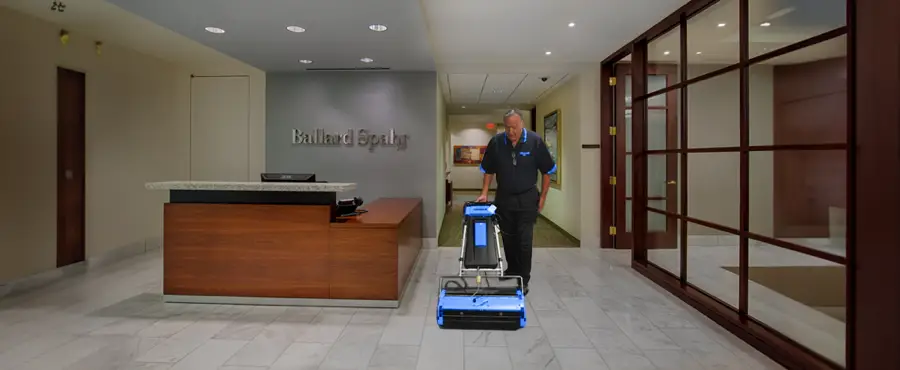Commercial Floor Cleaning Schedule
Creating a floor cleaning schedule for your commercial space is essential to maintain a clean and safe environment for employees and customers. Here’s a step-by-step guide on how to create an effective floor cleaning schedule.
Assess Your Space:
- Begin by assessing your commercial space. Identify the different types of flooring materials (e.g., tile, carpet, hardwood) and the high-traffic areas that may require more frequent cleaning.
Determine Cleaning Frequency:
- Decide how often each area of your commercial space needs to be cleaned. Factors to consider include foot traffic, the type of business, and specific hygiene requirements. For example, a restaurant kitchen floor may need daily cleaning, while an office space may only require weekly maintenance.
Assign Responsibility:
- Clearly define who is responsible for each cleaning task. You may have in-house janitorial staff, or you might hire a commercial cleaning service. Ensure everyone knows their roles and responsibilities.
Create a Cleaning Checklist:
- Develop a detailed checklist for each cleaning task. Specify the cleaning methods, tools, and products required for each area. Include safety precautions, especially if chemicals or machinery are involved.
Set a Cleaning Schedule:
- Create a weekly or monthly cleaning schedule that outlines when each cleaning task will be performed. Be specific about the date and time. Consider peak and off-peak hours to minimize disruption to your business operations.
Prioritize High-Traffic Areas:
- Give priority to high-traffic areas, such as entranceways and common spaces. These areas may require daily or multiple daily cleanings to maintain a professional appearance.
Consider Seasonal Needs:
- Some seasons may require additional cleaning attention. For example, during the winter, you might need more frequent cleaning to address salt and snow residue brought in from outside.
Allocate Resources:
- Ensure you have the necessary cleaning equipment, supplies, and personnel to execute the schedule effectively. This includes vacuum cleaners, mop buckets, floor scrubbers, cleaning agents, and personal protective equipment (PPE).
Implement Monitoring and Quality Control:
- Establish a system for monitoring the quality of cleaning tasks. Regular inspections and feedback can help maintain consistent cleaning standards.
Adjust as Needed:
- Periodically review and adjust your cleaning schedule based on feedback, changes in your business, or evolving cleaning needs.
Communicate with Staff:
- Ensure that all employees are aware of the cleaning schedule and its importance. Encourage them to report any cleanliness issues promptly.
Train Your Cleaning Staff:
- If you have an in-house cleaning team, provide them with proper training on cleaning techniques, safety procedures, and the use of cleaning equipment and chemicals.
Adhere to Safety Standards:
- Prioritize safety for your cleaning staff and anyone else in the vicinity. Ensure they are aware of safety protocols and have access to necessary safety gear.
Documentation and Record-Keeping:
- Keep records of cleaning schedules, tasks completed, and any incidents or issues that arise. This documentation can be helpful for compliance purposes and future reference.
Creating a floor cleaning schedule for your commercial space requires careful planning and organization. By following these steps and regularly reviewing your schedule, you can maintain a clean and hygienic environment that enhances the overall appearance and safety of your business.




